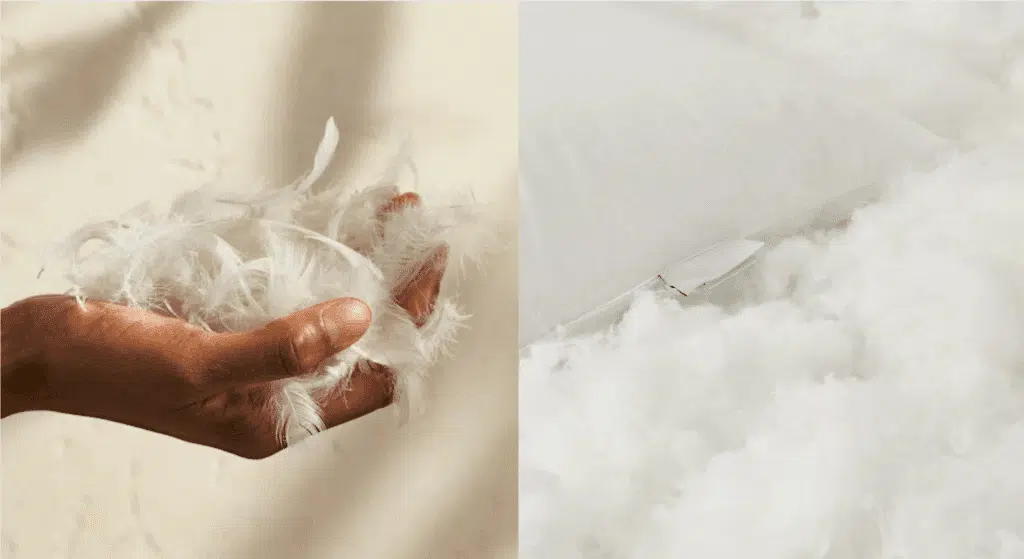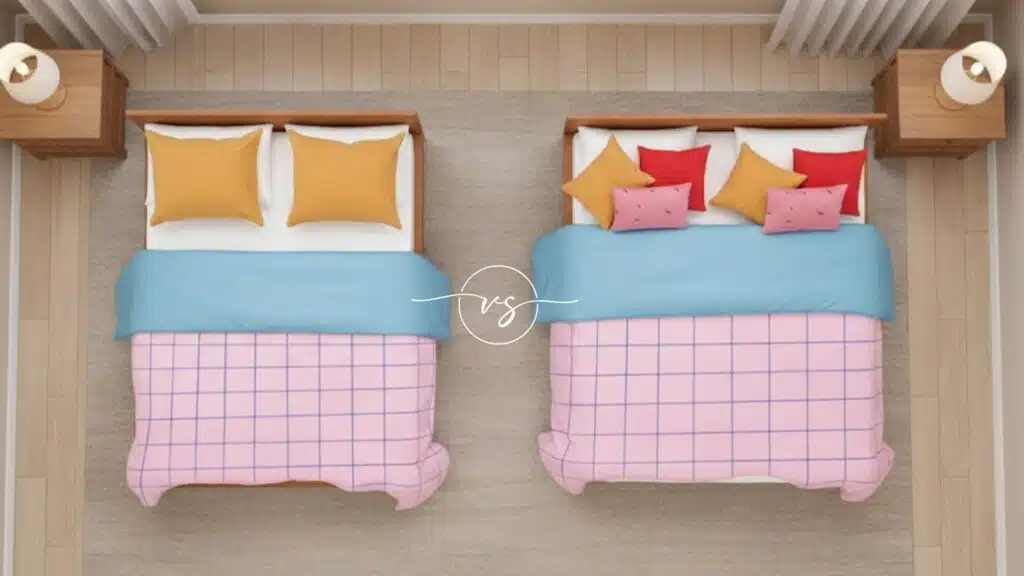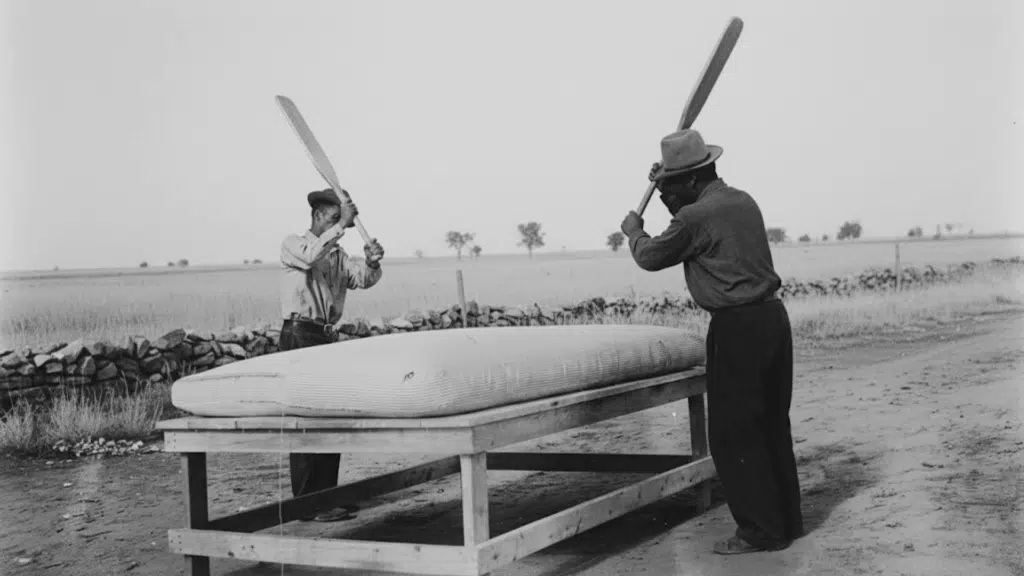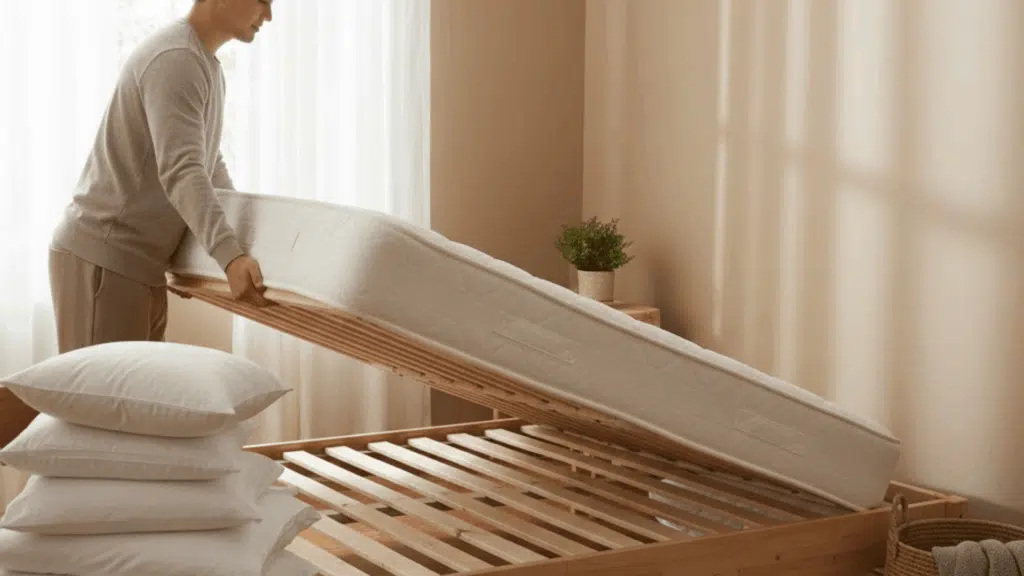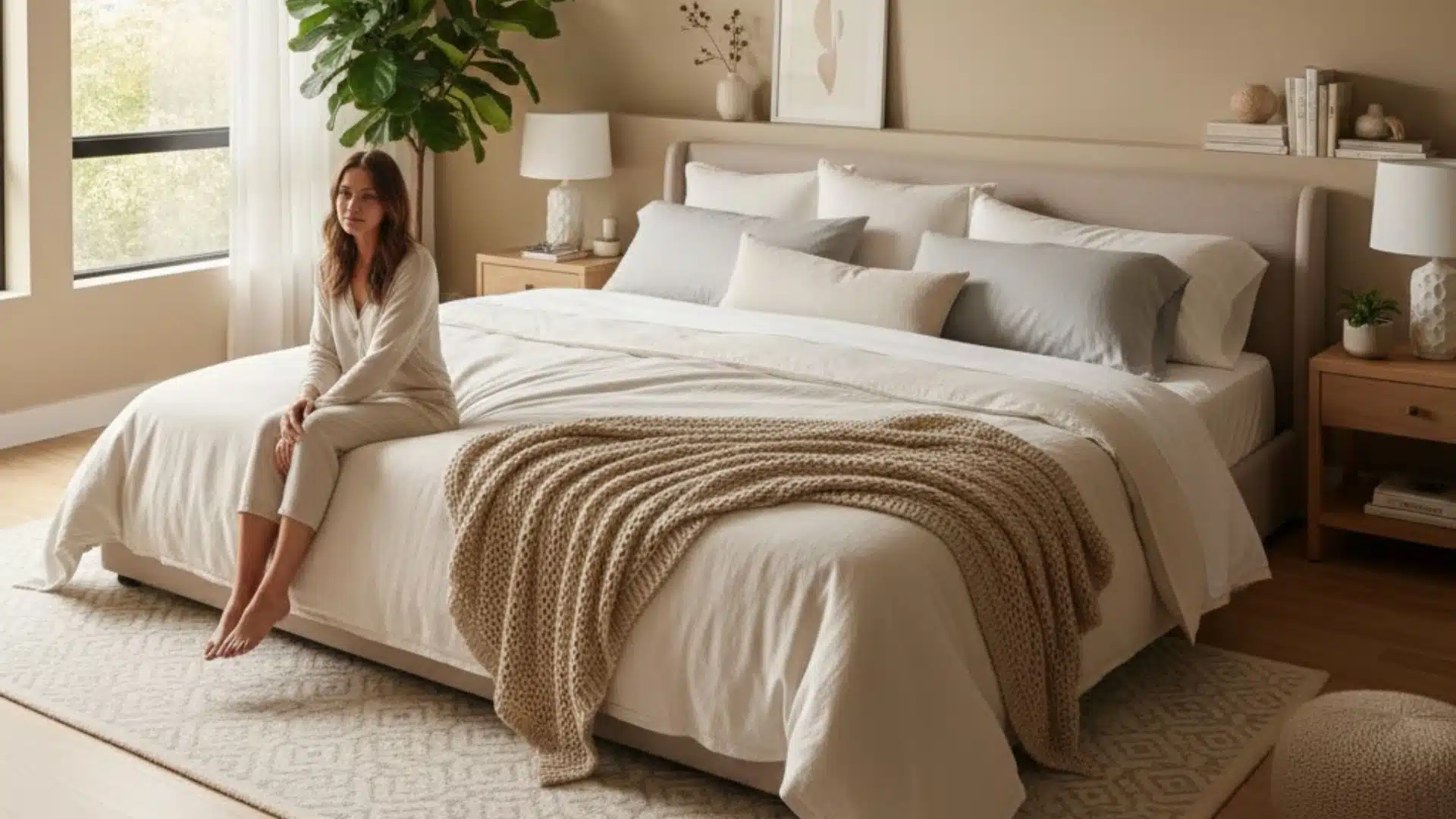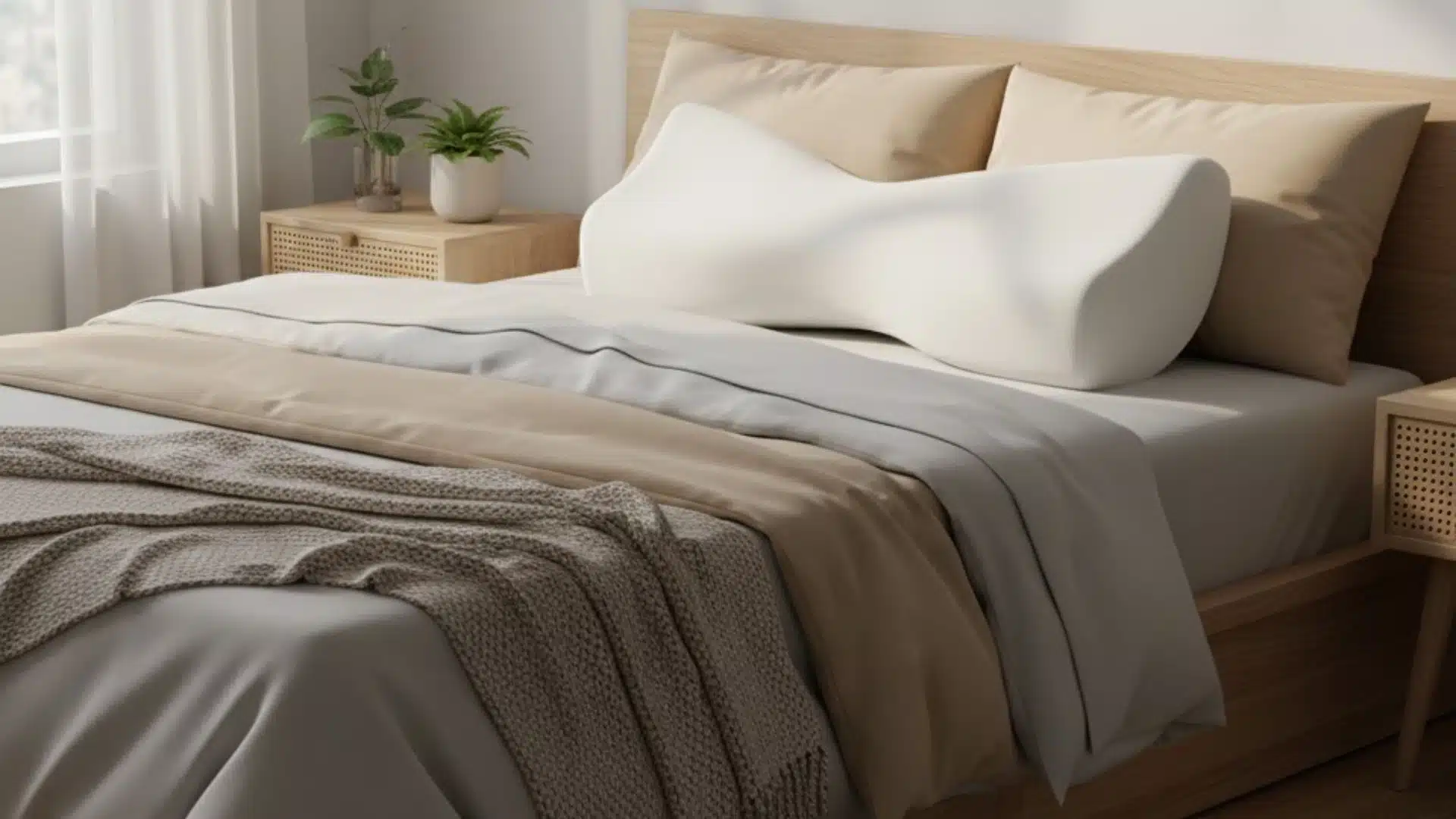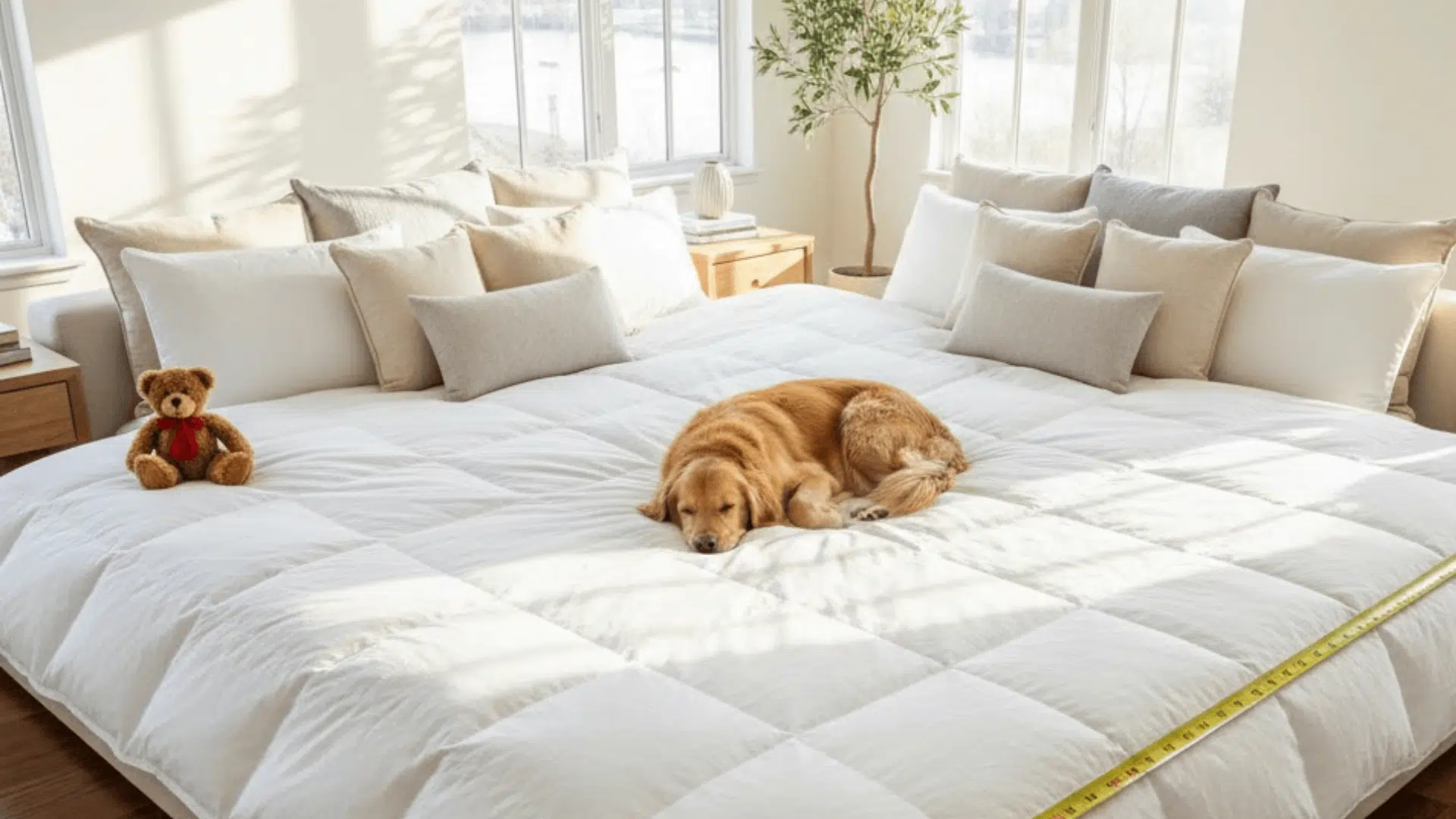When I first shopped for new bedding, I didn’t expect to get stuck on one question: down vs. down alternative. I thought picking a comforter would be quick, but the more I looked, the more I realized I didn’t know what filled materials actually meant for warmth, comfort, or care.
I wanted something that made sense for my needs, not just a popular option.
If you’re trying to make the same choice, this guide will help you figure it out. You’ll learn what each type is, how they perform in different climates, what they cost over time, and how long they last. You’ll also get tips on care, cleaning, and what to think about if allergies or the environment matter to you.
The Importance of Bedding Fill
The filling inside your bedding plays a big role in how comfortable you feel at night. It affects the warmth, softness, and how heavy or light your comforter or pillow feels. A good filling helps keep your body at the right temperature, so you’re not too hot or too cold while you sleep.
Filling also affects how long your bedding lasts. Some fillings hold their shape better, while others flatten out over time. If you choose the right type, your bedding can stay fluffy and cozy for years.
Different fillings also suit different needs. For example, some people might need hypoallergenic options if they have allergies. Others might want something lightweight for summer or extra warm for winter.
So when it comes to bedding, what’s inside really does matter. It’s not just about looks—filling plays a big part in giving you a better night’s sleep
Understanding the Basics: What is Down and What is Down Alternative?
Before picking the right bedding, it’s helpful to know what down and down alternative really are. Here’s a simple breakdown to get you started:
What is Down?
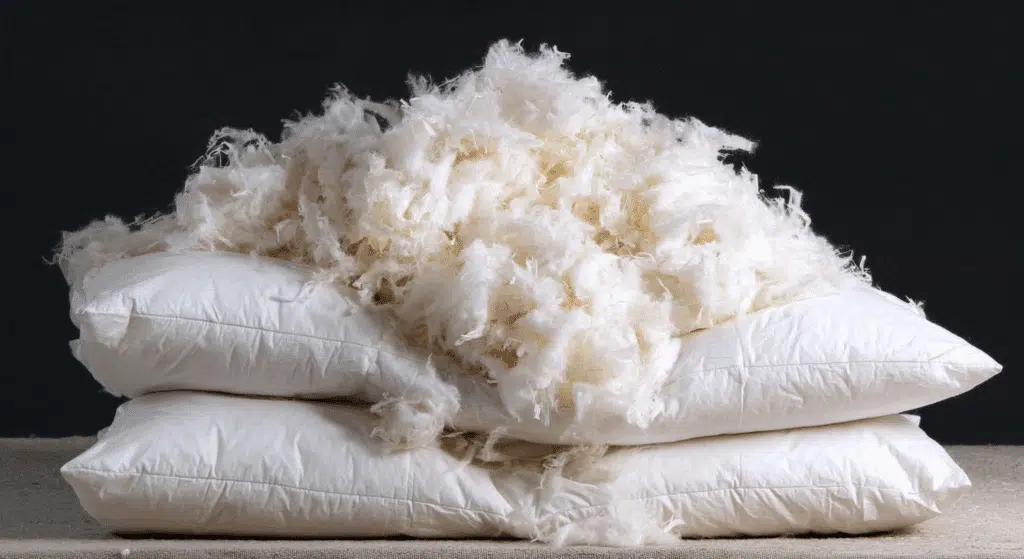
Down is the soft, fluffy layer found beneath the outer feathers of ducks and geese. It’s made up of light clusters that have no stiff quills. These clusters are designed to trap air, which helps birds stay warm in cold weather.
Because of this natural ability to hold warmth, down is often used in products like comforters, pillows, and winter jackets.
Unlike regular feathers, down feels smooth and light. It comes from the chest area of the bird, where the feathers are the softest. The quality of down can vary based on the type of bird and where it was raised.
Goose down is often considered higher quality than duck down, and down from colder regions usually has better insulation.
Down is collected during processing and sorted by size and softness. It’s then cleaned and used to fill bedding or clothing, providing natural warmth and comfort.
What is Down Alternative?

Down alternative is a man-made material designed to feel like real down. Instead of using feathers from ducks or geese, it’s usually filled with synthetic fibers like polyester. These fibers are shaped and layered to mimic the softness and fluffiness of natural down.
This type of filling is often used in comforters, pillows, and blankets. It’s made to trap heat and give the same cozy feel that down provides.
Some down alternative products also use advanced fibers like microfiber, which are finer and feel even softer.
Since it doesn’t come from animals, down alternative is a popular choice for people who prefer non-animal products. It also comes in different weights and styles, so it can be made to suit a variety of sleeping needs.
Overall, down alternative is a widely used option in bedding and home goods, created to offer comfort and warmth similar to natural down.
Down vs Down Alternative: Key Differences Explained
When choosing the right comforter or pillow, it helps to know what sets down apart from down alternative. Both have their strengths, but they’re made for different needs. Here’s a clear look at how they compare:
| Feature | Down | Down Alternative |
|---|---|---|
| Material | Natural feathers | Synthetic fibers |
| Warmth | Excellent insulation | Moderate warmth |
| Weight | Lightweight | Heavier |
| Breathability | High | Medium |
| Hypoallergenic | No | Yes |
| Cost | Expensive | Budget-friendly |
| Longevity | 10–15 years | 3–5 years |
| Care | Dry-clean only | Machine washable |
The difference between down and down alternative mainly comes down to cost, cleaning needs, warmth, and allergies. If you want something super warm and natural, down might be better.
But if you want something easier to care for and hypoallergenic, go with a down alternative. Each one has its own pros and cons.
Down vs. Down Alternative: What’s Best for You?
Before you decide, think about what matters, how warm you want to be, how much cleaning you’re okay with, how long it should last, and if you have allergies. Here’s a quick look at what each type brings to the table:
What Down Bedding Offers
Down bedding is known for its softness and warmth. Here’s a quick look at what it brings to the table and what you should keep in mind:
Benefits:
- Warmth: Great for chilly nights
- Long-lasting: Can stay in good shape for 10–15 years
- Comfort: Soft, fluffy, and cozy
Drawbacks:
- Price: Costs more than other options
- Cleaning: Needs professional care
- Allergy risk: Not ideal for people with feather allergies
What Down Alternative Bedding Offers
Down alternative bedding is a popular choice for many households. Here’s what it provides and what to consider before choosing it:
Benefit:
- Cost: Easier on your wallet
- Care: Simple to wash at home
- Safe for allergies: No real feathers inside
Drawbacks
- Weight: Feels heavier than down
- Airflow: Not as breathable
- Durability: Usually lasts around 3–5 years
Think about your needs and daily habits; this will help you choose the best option for you.
How to Choose Between Down and Down Alternative?
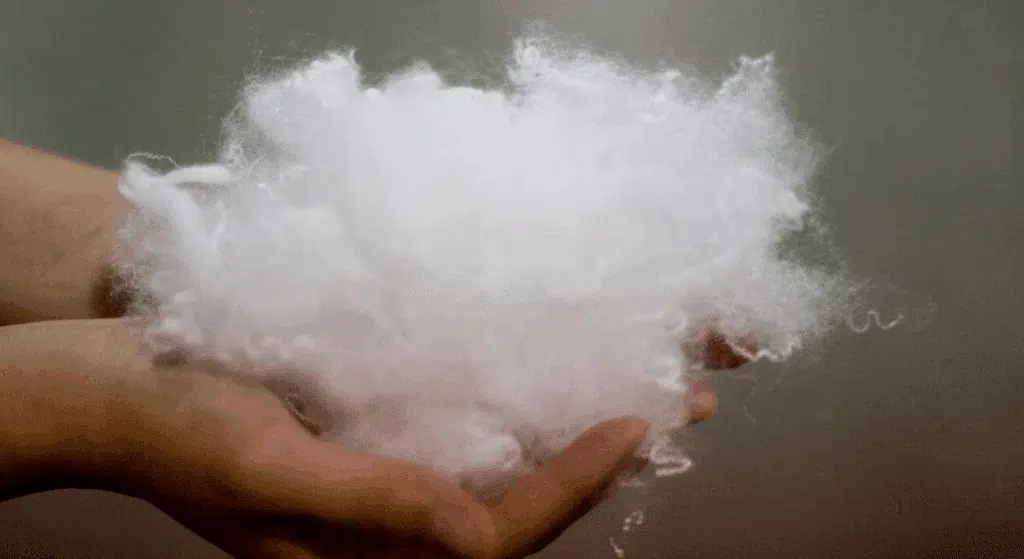
Choosing between down and down alternative depends on your personal needs, budget, and lifestyle. Start by thinking about warmth. If you need something extra warm for cold nights, down might be the better pick. It’s lighter but still traps heat well.
Next, think about allergies. If you’re sensitive to feathers or dust, a down alternative is the safer option. It’s made from synthetic fibers and is usually hypoallergenic. Also, look at how much care you’re willing to give. Down often needs dry cleaning, while down alternative can usually go in the washing machine.
Cost matters too. Down is more expensive, but it tends to last longer. Down alternative is cheaper upfront, but it may need replacing sooner.
Finally, consider what feels best to you. Some like the airy softness of down, while others prefer the weight of a down alternative. Your choice should match your comfort and daily habits.
Comfort and Climate Considerations
Your sleeping environment plays a big role in choosing the right bedding. In cold or dry climates, down performs well because it traps heat naturally. Look for a fill power of 600 or higher for strong insulation and a lofty, fluffy feel. Higher fill power means better warmth without added weight.
In humid or warm climates, down alternative is the better choice. It allows more airflow and holds less moisture, which helps prevent overheating. For these conditions, check the GSM (grams per square meter). A GSM of 150–250 gives light warmth, while 300+ adds more weight and heat.
Also consider loft, which refers to the thickness or puffiness of the comforter. A higher loft gives a cozier feel but may trap more heat. In warmer areas, go for a medium or low loft to stay cooler.
Matching your bedding’s fill and weight to your climate ensures better sleep and comfort year-round.
Cost vs. Value Over Time
When comparing down and down alternatives, it helps to look beyond the price tag and think about long-term value. A typical down comforter may cost around $150 to $300, while a down alternative comforter usually ranges from $50 to $100.
At first glance, down seems expensive. But when you factor in lifespan, the picture changes. A good down comforter can last 10 to 15 years with proper care. That brings the cost to about $10–$20 per year. On the other hand, down alternative comforters often last 3 to 5 years, bringing the cost to about $20–$25 per year.
So while down costs more upfront, it may save you money over time. Plus, it offers better warmth and stays fluffy longer.
If you’re looking for something long-lasting and don’t mind a higher starting price, down may give you more value in the long run.
Environmental and Ethical Factors
When choosing between down and down alternative, it’s also important to think about the impact on the environment and animals. Down comes from ducks or geese, so it raises concerns about animal welfare.
However, many brands now follow the Responsible Down Standard (RDS), which ensures that the birds are treated humanely and not harmed during the feather collection process. Always look for the RDS label if you want a more ethical option.
Down alternative uses synthetic materials, often made from polyester. While these fillings are animal-free, they can create microplastic waste when washed and are usually not biodegradable. This can lead to long-term pollution, especially if not recycled properly.
Some newer bedding options focus on sustainability. You’ll find comforters filled with bamboo fibers or recycled polyester, which help reduce waste and environmental damage. These options give you a way to sleep comfortably while also making a responsible choice.
Maintenance and Longevity Tips
Taking care of your comforter can help it last longer and stay comfortable night after night. No matter if you have down or down alternative, proper cleaning and storage tips like this make a big difference:
- Down comforters should be dry-cleaned or washed in large-capacity machines with gentle detergent.
- Down alternative comforters can usually be machine-washed at home; check the label.
- Air dry or use a dryer on low with clean tennis balls to keep the fill from clumping.
- Store your comforter in a breathable cotton bag, not plastic, to prevent moisture buildup.
- Fluff your comforter weekly to keep the fill evenly spread.
- Replace your comforter if it feels flat, lumpy, or doesn’t keep you warm anymore.
- Use a duvet cover to protect against stains, sweat, and dust; this reduces the need for frequent washing.
With the right care, your bedding can stay fresh, fluffy, and useful for many years.
Conclusion
Now that I’ve looked closely at down vs. down alternative, I understand how much the right fill can change the way I sleep. I didn’t just learn what each one is, I figured out what works best for my space, my body, and my routine. Knowing the differences helped me make a choice I feel good about every night.
Now it’s your turn. Think about what matters most to you. Do you care more about warmth, easy care, or staying allergy-free? Use what you’ve learned here to make a choice that fits your everyday life. Even small changes in bedding can lead to better sleep.
Want to keep learning? Check out more of the blogs on the website to get simple, honest tips on sleep and home comfort.


